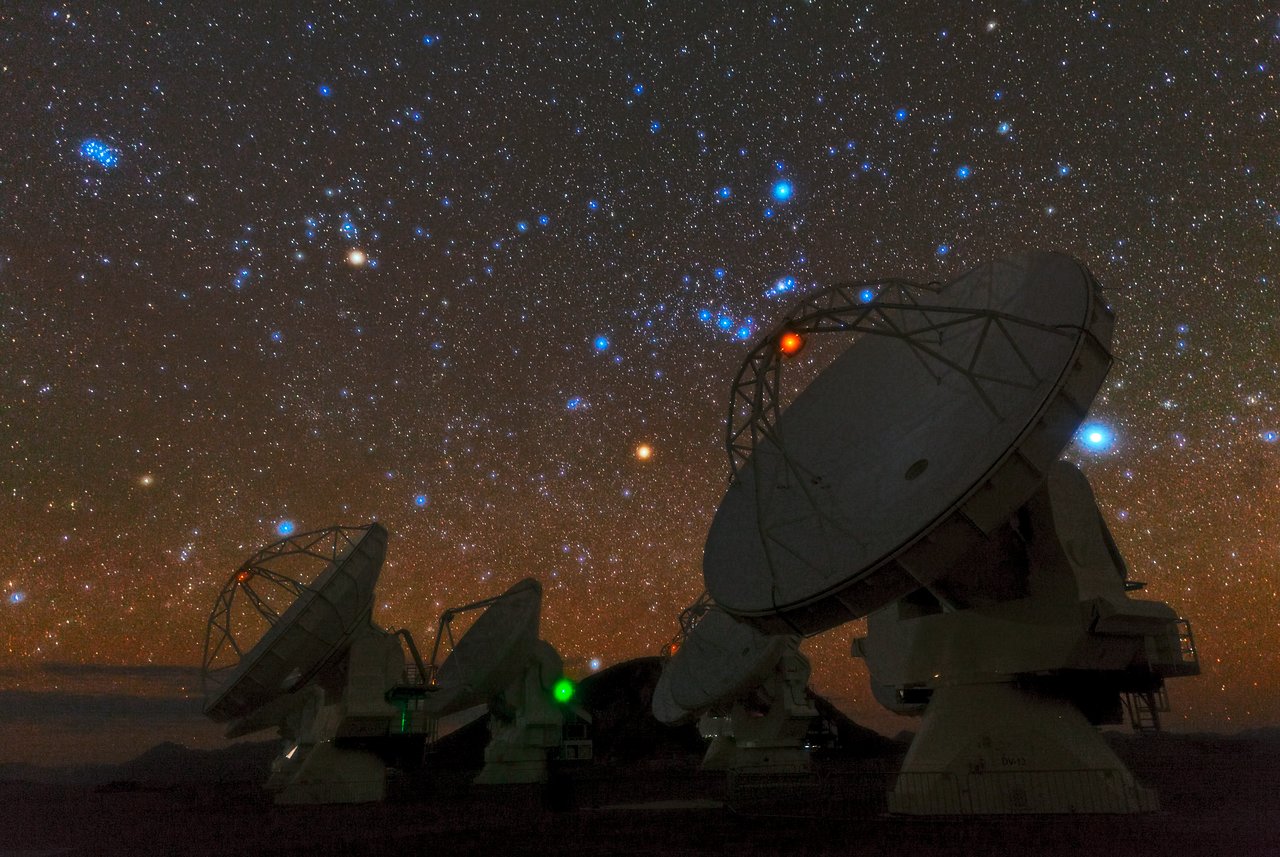The "Dark Patches"
In Northern Chile there exists
a very high plateau called “Chajnantor” (which means “place of departure”)
located in the Atacama Desert. It’s higher than most of the Earth’s atmosphere,
situated at around 16,500 feet.
At this incredibly high
location, it provides perhaps the best location on the planet to build a
telescope. In fact, that’s just what exists: it’s called the “Atacama Large
Millimeter/submillimeter Array,” or ALMA for short. As a radio telescope, it is
able to see and take pictures of various kinds of light waves that the naked
eye can’t see. It allows scientists to see parts of the universe that no other
telescope can see. The results are amazing.
There was an interesting news
bit on this telescope. (http://www.cbsnews.com/news/alma-peering-into-the-universes-past/)
A local Chilean physicist,
Eduardo Hardy, ALMA's director of North American Operations, spoke to the host
about how the radio telescope uses the dark
patches of the universe. In addition to taking pictures of places of light
we already see, it also peers deep into the darkness.
As Dr. Hardy said it, “The
Greek used the stars. The local populations used the dark patches, which is
precisely what ALMA is looking at. And in these dark patches, they saw
reflections of their daily lives...llamas, for example. They spun a whole
mythology around them. Here, the Milky Way is a river. And it actually does look like a river. But it's a river that will take the souls of the dead people and take them to heaven.”
Then it hit me. This was
really striking. I’ve never heard of that phenomenon. I know that nearly all other people groups around the world used the stars and planets—the “light places”—to be used as guides and help create narratives. I’ve never known that you
could use the dark patches of the night sky to be used as guides or to be used
to create images and narratives that symbolically represent the values of an
entire community.
It is the same in life, isn’t
it?
Our past is full of “dark
patches,” isn’t it? Isn’t it easy to think back to all the events that happened
to us—those times when we were genuine victims—and recognize how damaging those
events were? And can’t the same be said of those times where we weren’t
victims, but made really bad choices? What events haunt you? What people haunt
you?
(You might be denying this last
point right now because you’re not an integrated individual. You don’t acknowledge
the pain you’ve caused others or to yourself. If you’re one of those persons
who “has no regrets” in life, then I don’t trust you at all. Those with no
regrets are dangerous because they don’t make appropriate changes when they
blow it.)
What are your “dark patches”
right now?
The Chileans looked at the
dark patches and drew images of animals and events that helped narrate the
values of their people. What about you? What do you do when you see the “dark
patches” in your life?
·
Do you look at the “dark patches” and cry? (That’s
healthy; you’re just grieving).
·
Do you look at the “dark patches” and get angry?
(That’s healthy; you’re protesting, which is part of grieving.)
· Do you look at the “dark patches” and blame
others for your own bad choices? (That’s unhealthy; figure out why you can’t
take responsibility for your choices. Is it too painful? Are you so prideful,
above the rest of us, such that you can’t admit wrong choices? Etc.)
Or, do you look at the “dark
patches” of life and see major turning points in your life?
As a Christian, it’s easy to
be surprised that life is full of “dark patches.” Really. God is still good
even though there are plenty of “dark patches.” Jesus faced them often. People
were always using him to be healed or to eat (ever felt used by someone?). People were always trying to find
something wrong with what he said so that they could get him arrested or
killed (ever felt judged by someone when doing the right thing?). His closest friends typically misunderstood him, and when he needed
them the most, they betrayed him and deserted him (ever been betrayed?). Of course, these events
continually highlighted the generosity of Jesus, his forgiveness, charity,
kindness, and love. The “dark patches” in his life were as instructive for his
life as the bright spots. Through his "dark patches" we gain precious access into the incredible character of God.
What do you do with your “dark
patches”? Do you see any kind of direction and narrative? Or, do you choose to
only pay attention to the bright spots in your life?
Get to the place where you can look intently at the "dark patches." Process whatever feelings arise when you do with a trusted friend or counselor. And as you heal, use those "dark patches" as a guide: part of the great metanarrative of your life that gives you direction and purpose.




